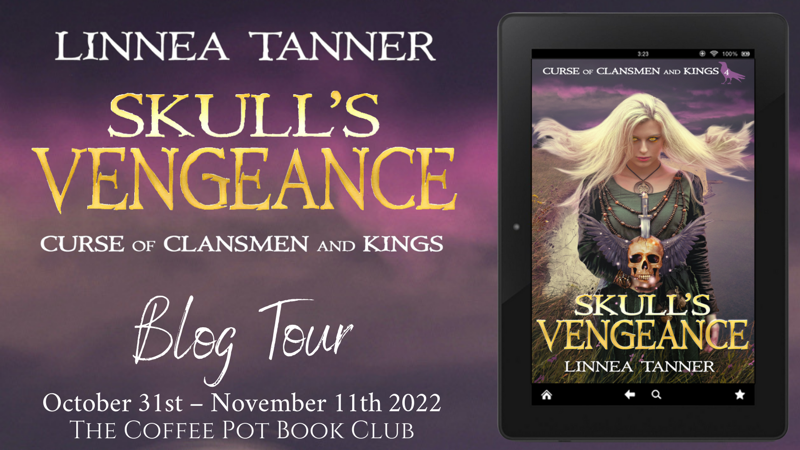
A Celtic warrior queen must do the impossible—defeat her sorcerer half-brother and claim the throne. But to do so, she must learn how to strike vengeance from her father’s skull.
AS FORETOLD BY HER FATHER in a vision, Catrin has become a battle-hardened warrior after her trials in the Roman legion and gladiatorial games. She must return to Britannia and pull the cursed dagger out of the serpent’s stone to fulfill her destiny. Only then can she unleash the vengeance from the ancient druids to destroy her evil half-brother, the powerful sorcerer, King Marrock. Always two steps ahead and seemingly unstoppable, Marrock can summon destructive natural forces to crush any rival trying to stop him and has charged his deadliest assassin to bring back Catrin’s head.
To have the slightest chance of beating Marrock, Catrin must forge alliances with former enemies, but she needs someone she can trust. Her only option is to seek military aid from Marcellus—her secret Roman husband. They rekindle their burning passion, but he is playing a deadly game in the political firestorm of the Julio-Claudian dynasty to support Catrin’s cause.
Ultimately, in order to defeat Marrock, Catrin must align herself with a dark druidess and learn how to summon forces from skulls to exact vengeance. But can she and Marcellus outmaneuver political enemies from Rome and Britannia in their quest to vanquish Marrock?
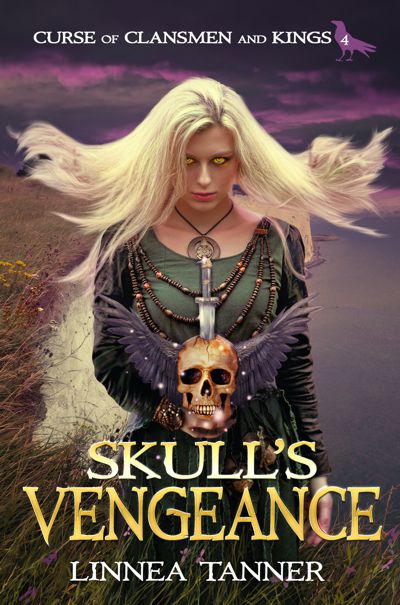
Background Concerning the Druids
Most of the information about the druids came from the accounts of Julius Caesar (100 BC–44 BC), who had personal dealings with the Celts in his conquest of Gaul. The druids, who could be either male or female, were the intelligentsia of the Celtic tribe who often had more power than kings in making decisions. Druids officiated at the worship of the gods, regulated public and private sacrifices, and gave rulings on all religious questions. Roman historian Pomponius Mela writes, “The Druids profess to know the will of the gods.”
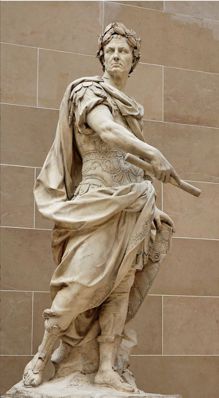
The druids ruled under one leader with whom they held the highest respect. When the leader died, another outstanding individual replaced him if there was a consensus. If not, an election would be held to select the head or the final choice would be left to the winner of a final fight. Druids served as judges in most disputes, whether between tribes or between individuals, and adjudicated any compensation to be paid in final judgments. Their decisions were final in all public and private matters. Anyone failing to accept their decision was banned from taking part in any sacrifice—the heaviest punishment that could be inflicted.
Caesar asserted that the druid doctrine was exported from Britain into Gaul. The druids believed their religion forbade them to commit their teachings to writings as these could be made public. Students had to memorize volumes of verse—many of them spending twenty years at their studies. It should be noted the Celts maintained written public and private accounts by using the Greek and Latin alphabets.
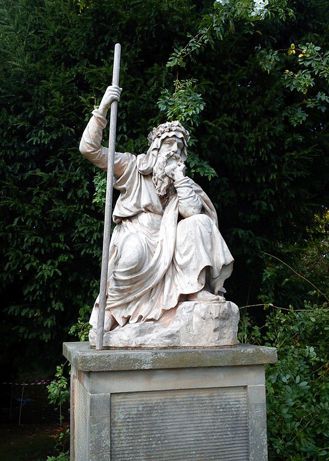
The most profound philosophy that Caesar highlighted about the druids is their belief that the soul does not perish, but passes from one body to another after death. According to Caesar the bravery of the Celts sprang from their lack of fear of death—the result of their belief that the soul does not die but is reincarnated after death. This philosophy is consistent with the Greek philosopher, Pythagoras, in 500 BC. I have freely expanded on the concept of the soul as a way to explain the druids’ mystical powers in the Curse of Clansmen and Kings series.
The druids believed the skull was the site that the immortal soul dwelled. Images of the human heads are prevalent at cult sites in virtually all regions inhabited by the Celts. The human head was venerated above all else as it was considered to be the temple of the soul — the center of emotions as well as of life itself, and a symbol of divinity and the powers of the world of the spirits. To possess the enemy’s head was to possess his soul. As with so many aspects of the warrior’s life, the taking of an opponent’s head in battle, preferably in single combat, had a mystical significance.
The importance and extent of the cult of the severed head among the Celts is demonstrated by their display in shrines, either mounted in stonework at La Roquepertuse in southern Gaul, or on wooden poles as at the Bredon Hill Fort in western Britain. It is interesting to note that in both instances the heads were set up at the entrances. Perhaps the souls of these unfortunate warriors were now being used for symbolic protection of their enemies’ strongholds.
Despite Roman efforts to destroy the influence of the druids, Celtic spiritual beliefs thrived in oral traditions that were later written down by monks in the form of mythical tales of chivalry, magic, and a pantheon of gods and goddesses that showed the Celtic connection to nature.
Druids as the Magi
The Roman historian, Pliny the Elder (23 AD – 79 AD), referred to druids as the magi. “Even today Britain is still spellbound by magic, and performs its rites with so much ritual that it might almost seem to be a source of Persian customs.”
Perhaps it was Pliny’s fascination with magic that he recounted the anguinam, the ‘Druid’s eggs’ or ‘serpent’s egg’. He said he possessed one of these eggs that looked like a crystal about the size of a moderately sized apple. The eggs were reportedly made by hissing snakes put together, the foam from their mouths producing a viscous slime which became a ball when tossed in the air and caught by a Druid who then used it to counteract incantations. The egg is a powerful image used in Celtic and other mythology.
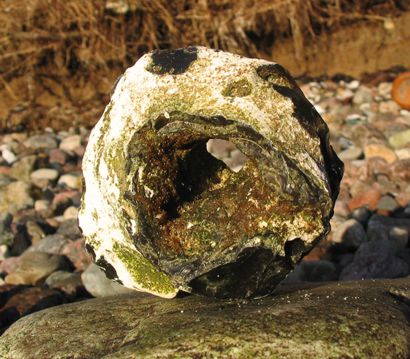
In Celtic literature and tradition, druids have also been popularly referred to as magicians—wizards possessing supernatural powers. By the time of the advent of Christianity in both Ireland and Britain, druids were identified by the word magi —a name used for the priests of ancient Persia who reputedly had power over supernatural entities. Early Celtic Christian writers who believed in magic gave these supernatural powers to saints in their church.
Ancient Druids as Magi in Skull’s Vengeance
I have taken literary license to depict that some of the Celtic characters in Skull’s Vengeance can summon magical powers of the ancient druids from souls encased in their skulls. Based on Welsh and Irish mythology and legends, druids can summon magical fog and storms to destroy or disperse their enemies and change into other forms.
The Warrior Queen, Catrin, in the novel can summon dark forces through her raven guide to generate a tornado of ravens which descends to the ground to fight off her enemies. Her evil half-brother, Marrock, can summon dark forces of nature from skulls to strike his enemies dead with lightning on the battlefield. He can cause earthquakes, creating crevasses in which wheels of horse-driven chariots get stuck.
King Marrock can also shapeshift into a red wolf or dragon. Catrin primarily shapeshifts into a white raven, but she transforms into a mouse in the novel to survey a villa where slaves are being held. Marrock’s mother, Rhan, is a dark druidess who took Catrin’s form to seduce her secret Roman husband in a previous novel.
References
Peter Berresford Ellis, The Druids; 1995; William B. Eerdmans Publishing Company, Grand Rapids, MI.
John Davies, The Celts: Prehistory to Present Day; 2005; United States: Sterling Publishing Co., New York.
Julius Caesar, translated by F. P. Long, 2005. The Conquest of Gaul; United States: Barnes & Noble, Inc.
Universal: https://books2read.com/u/bao09y
Amazon UK: https://www.amazon.co.uk/Skulls-Vengeance-Curse-Clansmen-Kings-ebook/dp/B0BC2GCFGG/
Amazon US: https://www.amazon.com/Skulls-Vengeance-Curse-Clansmen-Kings-ebook/dp/B0BC2GCFGG/
Amazon CA: https://www.amazon.ca/Skulls-Vengeance-Curse-Clansmen-Kings-ebook/dp/B0BC2GCFGG/
Amazon AU: https://www.amazon.com.au/Skulls-Vengeance-Curse-Clansmen-Kings-ebook/dp/B0BC2GCFGG/
Barnes and Noble: https://www.barnesandnoble.com/w/skulls-vengeance-linnea-tanner/1142034153?ean=2940185587164
iTunes: https://books.apple.com/us/book/skulls-vengeance/id6443334037
Kobo: https://www.kobo.com/us/en/ebook/skull-s-vengeance
GooglePlay: https://play.google.com/store/books/details?id=CTSDEAAAQBAJ
Booktopia: https://www.booktopia.com.au/skull-s-vengeance-linnea-tanner/book/9781733600200.html
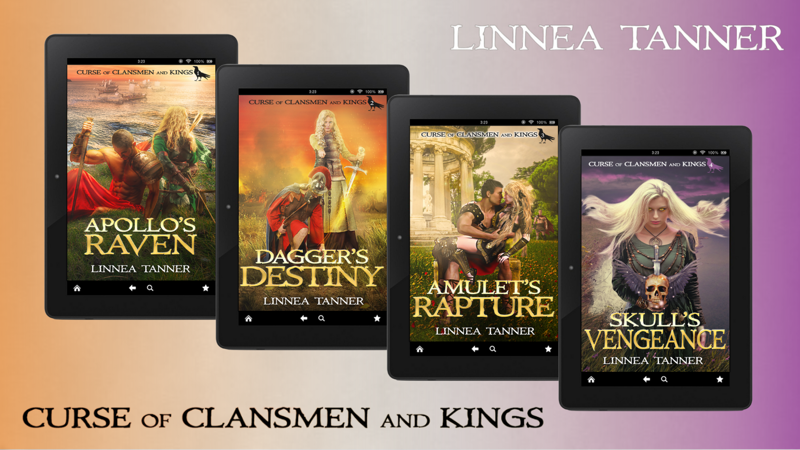
Apollo’s Raven: https://www.amazon.com/dp/B0848QHHK4/
Dagger’s Destiny: https://www.amazon.com/dp/B07G3G4G55/
Amulet’s Rapture: https://www.amazon.com/Amulets-Rapture-Curse-Clansmen-Kings-ebook/dp/B07Y8SS2B2
Skull’s Vengeance: https://www.amazon.com/Skulls-Vengeance-Curse-Clansmen-Kings-ebook/dp/B0BC2GCFGG/
Meet Linnea Tanner

Award-winning author, Linnea Tanner, weaves Celtic tales of love, magical adventure, and political intrigue in Ancient Rome and Britannia. Since childhood, she has passionately read about ancient civilizations and mythology. Of particular interest are the enigmatic Celts, who were reputed as fierce warriors and mystical Druids.
Linnea has extensively researched ancient and medieval history, mythology, and archaeology and has traveled to sites described within each of her books in the Curse of Clansmen and Kings series. Books released in her series include Apollo’s Raven (Book 1), Dagger’s Destiny (Book 2), and Amulet’s Rapture (Book 3). Skull’s Vengeance (Book 4) .
A Colorado native, Linnea attended the University of Colorado and earned both her bachelor’s and master’s degrees in chemistry. She lives in Fort Collins with her husband and has two children and six grandchildren.
Connect with Linnea
Website: https://www.linneatanner.com/
Twitter: https://twitter.com/linneatanner
Facebook: https://www.facebook.com/linnea.tanner
LinkedIn: https://www.linkedin.com/in/linnea-tanner-a021932b/
Instagram: https://www.instagram.com/linneatanner/
Pinterest: https://www.pinterest.com/linneatanner/_created/
BookBub: https://www.bookbub.com/authors/linnea-tanner
Amazon Author Page: https://www.amazon.com/Linnea-Tanner/e/B01N6YEM04
Goodreads: https://www.goodreads.com/author/show/16474282.Linnea_Tanner
